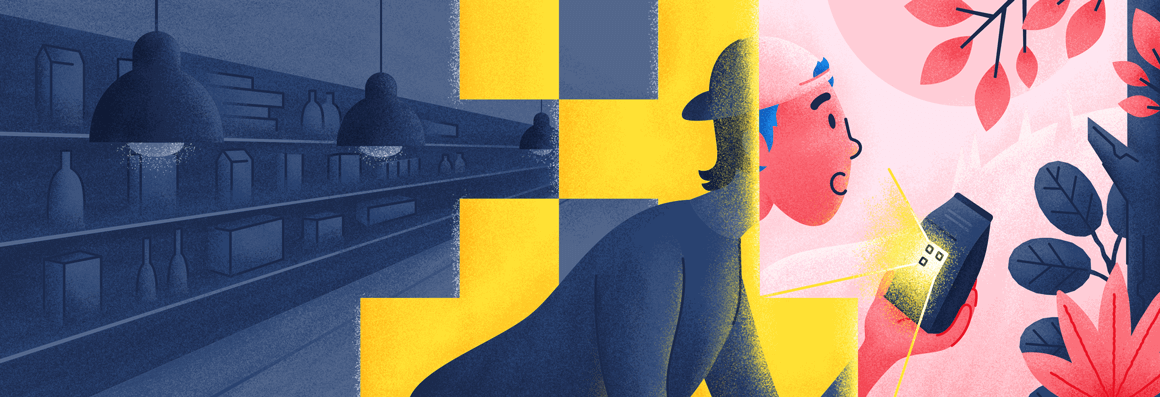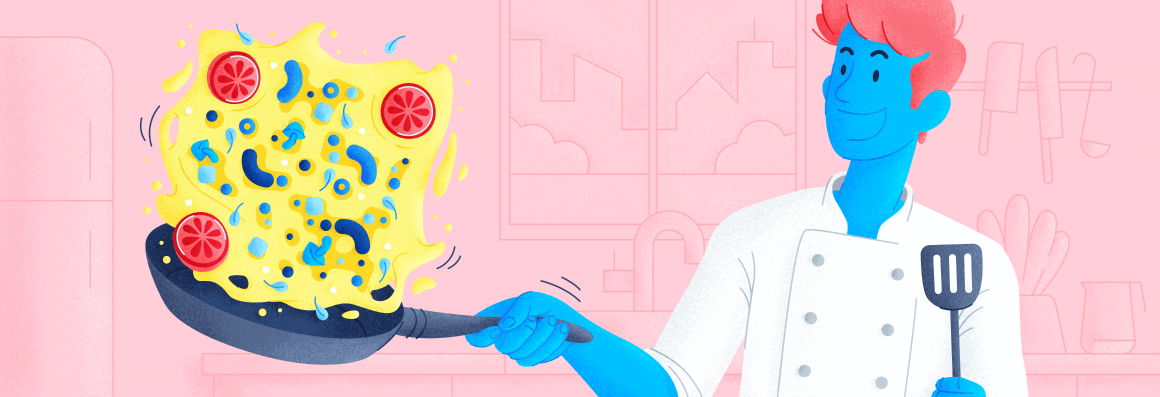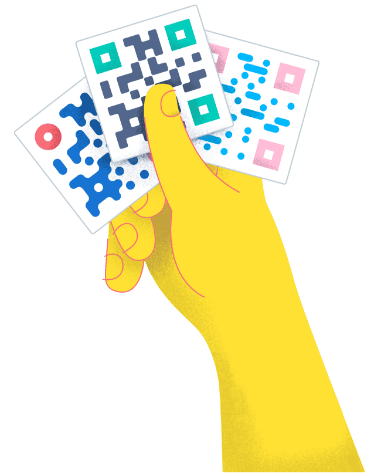- Best Practices ●
- COVID-19 ●
- Industry Trends ●
- Partners ●
- Product ●
What is Retail Packaging? A Comprehensive Guide
Do you want to make a lasting impression on your customers right from the start? What if you could communicate with them even before they open your product? Spoiler alert: you can!
Retail packaging offers endless possibilities for brands to connect with their customers, whether through design, sustainability efforts, or informative content that guides purchasing decisions. In this blog post, we’ll explore what retail packaging is and how you can harness its full potential to boost your sales.
-
Table of contents
- What is retail packaging?
- Advantages of retail packaging
- Protects the product
- Provides product information
- Showcases brand identity
- Makes an environmental impact
- Types of retail packaging
- Eco-friendly packaging
- Custom retail boxes
- Paperboard boxes
- Rigid boxes
- Foil-sealed bags
- Corrugated boxes
- Best practices for retail packaging
- Make the unboxing experience unforgettable
- Attract with exquisite design
- Tell a story
- Employ QR Code technology
What is retail packaging?
Retail packaging refers to the processes and materials used to present products to consumers in physical stores or online. It’s designed to protect the product, enhance its visual appeal, and showcase the brand to attract customers and boost sales.
Advantages of retail packaging
Retail packaging offers products countless benefits beyond protecting them from damage. From making a greater environmental impact to showcasing your brand, retail packaging provides businesses of all sizes with the opportunity to skyrocket sales.
Elevates the product’s aesthetic
Consumers are naturally drawn to visually appealing packaging—and first impressions count, no matter your customers’ tastes and preferences. Your packaging design tells a visual story about your product, giving customers a sense of what to expect.
For example, if you’re selling a beverage, your packaging might use fruity images, bright colors, and playful fonts to evoke a feeling of refreshment. Good design also enhances the perceived value of a product, making customers more likely to purchase.
Protects the product
On the practical side, retail packaging is key to protecting the product and the brand. Poor product packaging can have serious consequences, from hurting a brand’s reputation to discouraging repeat purchases.
A Smither survey found that 58% of consumers would avoid purchasing a product with damaged packaging from a brand. That’s a real missed opportunity, as repeat customers are the backbone of any successful business.
Companies should consider the entire journey from production and shipment to unboxing. This includes the various stages of transportation and handling by different staff members, all the way to when the customer chooses and purchases the product.
Provides product information
Retail packaging can provide a goldmine of information for consumers to explore before purchasing. From nutritional information and easy-to-follow instructions to details about ingredients and allergen warnings, your packaging can become an educational guide for your customers and help influence their decisions.
If you’re worried you might not have enough space to display all the necessary information, consider adding a QR Code on product packaging. Our 2D Barcode helps make product information more accessible to your customers through a simple scan with their mobile devices.
When consumers scan the QR Code, they’ll discover valuable content that wasn’t available before. Plus, you can track which store locations drive the most traffic using QR Code tracking scan data.
Showcases brand identity
Aesthetics aside, your retail packaging is an opportunity to introduce your brand to your customers. Your packaging gives customers a snapshot of your brand personality through its typography, images, colors, and text.
Every aspect of your packaging should embody your brand’s message. For example, a chocolatier might choose red ribbons to accentuate the luxury of their chocolates, and an eco-conscious swimwear brand might opt for sea-blue sustainable packaging to reflect their values. Each element, big or small, becomes an extension of your brand.
Missing out on this opportunity means not fully connecting with your customer, as every touchpoint is a chance to make a meaningful impression.
Learn more about elevating your brand with packaging ideas and tips!
Makes an environmental impact
Retail packaging is a great opportunity for companies to make smart, sustainable choices. It’s not just about keeping up with the growing demand for transparency and greener practices—it’s also a commitment to the environment.
A survey in the UK found that 1 in 4 online shoppers avoid brands with excessive packaging, and 4 in 5 prefer products wrapped in paper or cardboard. This shift shows that sustainability is a big deal for today’s shoppers, pushing brands to step up the eco-friendly game.
Luckily there is a wealth of eco-friendly packaging ideas to make a positive and meaningful impact. You could start a recycling program, encourage customers to reuse or repurpose your packaging, or even explore plant-based packaging options like seaweed—the list goes on! By going green, you’ll win over eco-conscious consumers and do your part for a healthier planet!
Types of retail packaging
These days, the choices for retail packaging are practically endless. From going green with sustainable packaging and personalizing with custom retail boxes to trying corrugated for protecting heavier products, there’s the perfect packaging to suit your business needs.
Eco-friendly packaging
Eco-friendly packaging is often seen as biodegradable materials, plant-based, or plastic alternatives. But it’s not just about the materials—it’s about adopting an eco-conscious mindset that prioritizes packaging choices that are ethically sourced, reduce excess, and are optimized for recycling.
More, sustainable packaging is evolving to include smart packaging solutions that improve the supply chain, reduce waste, and minimize fossil fuel consumption. To truly embrace eco-friendly packaging, consider the entire packaging process holistically and ensure it’s making a greener environmental impact.
Custom retail boxes
Custom-made retail boxes are specially designed to not only protect and carry the weight of a product but also to showcase your brand. By infusing your brand’s identity, these boxes add personality to what might otherwise be a generic cardboard box, telling consumers nothing about who you are as a brand.
With a personalized look and feel, custom retail boxes grab your customer’s attention and evoke an emotional response before unboxing. They build anticipation and set the stage for the product experience.
Paperboard boxes
Paperboard boxes are a plant-based, eco-friendly packaging option made from wood pulp. They’re thicker than regular paper, yet lightweight and versatile. Paperboards come in various thicknesses, making them perfect for many industries, from makeup and beauty products to food and beverages.
Their durability makes paperboard a top choice in the packaging industry, efficiently protecting products even during the bumpiest of transits.
Rigid boxes
Also known as set-up boxes, rigid boxes are a premium type of packaging that is sturdy, thick, and doesn’t fold, making them perfect for heavier products. The exterior is often embellished with printed paper to add a touch of sophistication, which helps in attracting the right buyer.
Rigid boxes are typically used for high-end products like jewelry, electronics, and board games. They’re designed for longevity, so customers can keep and even repurpose the packaging long after its original use.
Foil-sealed bags
Also referred to as pouch packaging, these are air-tight sealed bags with a high-barrier lining that keeps out moisture, bacteria, and oxygen. These protective layers help keep products—such as coffee, spices, tablets, and capsules—fresh for a long time. You’ll find them in various industries, from pharmaceuticals to food and beverages.
Corrugated boxes
This type of packaging is a container made from multiple layers of corrugated cardboard: inside, outer, and middle. Corrugated cardboard is tough and resilient, holding up well against moisture and temperature changes.
Because of its durability, these boxes are great for transporting large and heavier items like furniture, automotive equipment, or appliances.
Best practices for retail packaging
Going above and beyond doesn’t have to be extravagant—focusing on the unboxing experience, thoughtful package design, storytelling, and using QR Codes are great ways to start. We dive into all of these best practices below.
Make the unboxing experience unforgettable
The unboxing experience has become an event in and of itself over the last few years, with unboxing videos trending on social media. But beyond the social media buzz, when customers unbox a product for the first time, they’re having a brand experience. Every detail you use to package your product plays a role in that moment.
Every interaction with your brand leaves an impression, so it’s important to contemplate how you want to present your products. This is your chance to tell your unique brand story and showcase your personality! Put on your creative thinking hat and consider how you want your customers to feel when opening up your package.
Whether adding custom tissue paper, including a personal note, or tossing in a free sample, there are endless small business packaging ideas to make the experience as personal as possible.

Attract with exquisite design
Bold design makes an impact: It makes a product more desirable, like marveling at a kaleidoscope-colored mural on a building you’d otherwise pass by. The power of good design is that it demands attention, stirs emotion, and creates a connection between the design and the viewer.
Your package design matters too—the colors, typography, and materials you choose all shape how your customers perceive your product. When brands create beautifully designed packages, it gives customers a sense of the brand and the product. It also sets expectations of what’s inside, making it a powerful marketing tool.
While good package design might vary between online and offline stores, it’s crucial for both. In a brick-and-mortar store, where brands compete for attention, great design helps you stand out on the shelf and outshine the competition.
Investing in the unboxing experience for your online store helps create a lasting brand impression and encourages repeat purchases—transforming one-time buyers into brand enthusiasts.

Tell a story
What is retail packaging without a story to accompany it? Brands looking to stand out can set themselves apart by weaving unique stories into their packaging.
If packaging is the first touchpoint between the customer and the brand, storytelling is a powerful way to connect with your audience. For example, Designer Natalie Lincalis created a fictional brand that uses creative storytelling in packaging design.
She named the brand Fate Potato Chips and infused elements of Greek Mythology, featuring characters like Minotaur, Cyclops, and Medusa in the package illustrations. Each mythical character represents the different flavors of the chips—BBQ, original, and sour cream and onion. The brand name and font also incorporate Greek Mythology symbols—staying true to the theme and branding.
Storytelling is a powerful tool for helping retail brands communicate their message to their target audiences. Through compelling narratives, brands can evoke emotions and create a profound customer bond.

Employ QR Code technology
Retail packaging pairs perfectly with QR Code technology. Why? QR Codes have a range of applications, from opening up omnichannel experiences that connect your packaging to your online retail world, to launching loyalty programs that keep customers hooked on your brand.
For example, you can include a Coupon QR Code on a packaging insert in every retail box to start your loyalty program or print a Social Media QR Code directly on your package so customers can easily engage with your brand on social media—the possibilities are infinite!
Smart packaging QR Codes can make your packaging more interactive and exciting to engage with. Plus, by using QR Codes in retail, you unlock a goldmine of scan data and gain meaningful insights into the effectiveness of your marketing initiatives. This data helps you pinpoint which marketing materials are striking a chord with your customers and where to focus your efforts for future campaigns.

Make an instant impression with QR Codes on retail packaging using QR Code Generator PRO
Whether you’re considering corrugated boxes, custom designs, or eco-friendly options, there’s a retail packaging solution perfect for your brand. Beyond protecting your product, the right packaging can enhance your brand, tell your story, and connect with your customers on a deeper level.
If you’re looking to make your packaging smarter, track every customer interaction, and create seamless connections between your packaging and online presence, QR Codes are the key. Integrating QR Codes into your retail packaging adds a layer of convenience and ensures your brand stays connected with consumers beyond their initial purchase.
Sign up to QR Code Generator PRO today and start exploring new possibilities for your retail packaging!






 Add custom colors, logos and frames.
Add custom colors, logos and frames.

